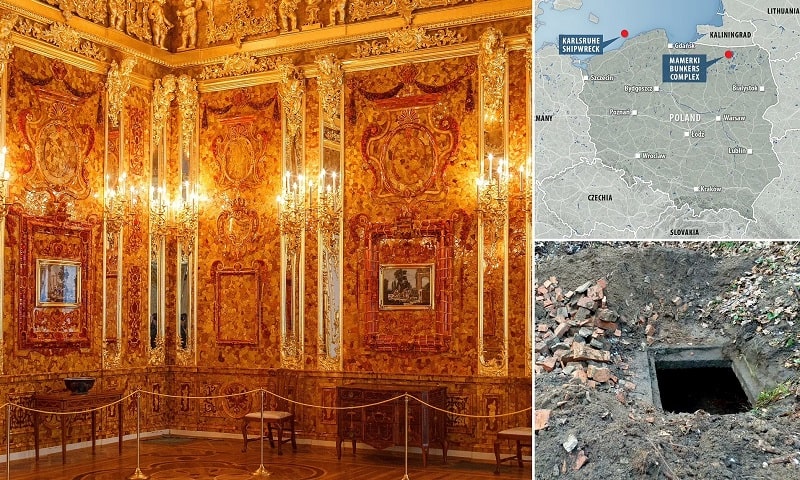Have you ever heard of a room entirely covered in amber, a shimmering jewel stolen during World War II and never recovered? That’s the story of the Amber Room, a dazzling masterpiece that vanished without a trace over 75 years ago.
This chamber, a testament to artistic mastery and a symbol of imperial grandeur, captivated audiences for centuries. But its journey is shrouded in mystery. Dive into the captivating history of the Amber Room, from its creation in Prussia to its disappearance in Russia. We’ll explore the frantic attempts to save it during wartime, the dead ends in the relentless search for its recovery, and the enduring hope that this lost treasure might still be waiting to be rediscovered.
From Prussia’s Grandeur to Russia’s Jewel: A Room Bathed in Amber
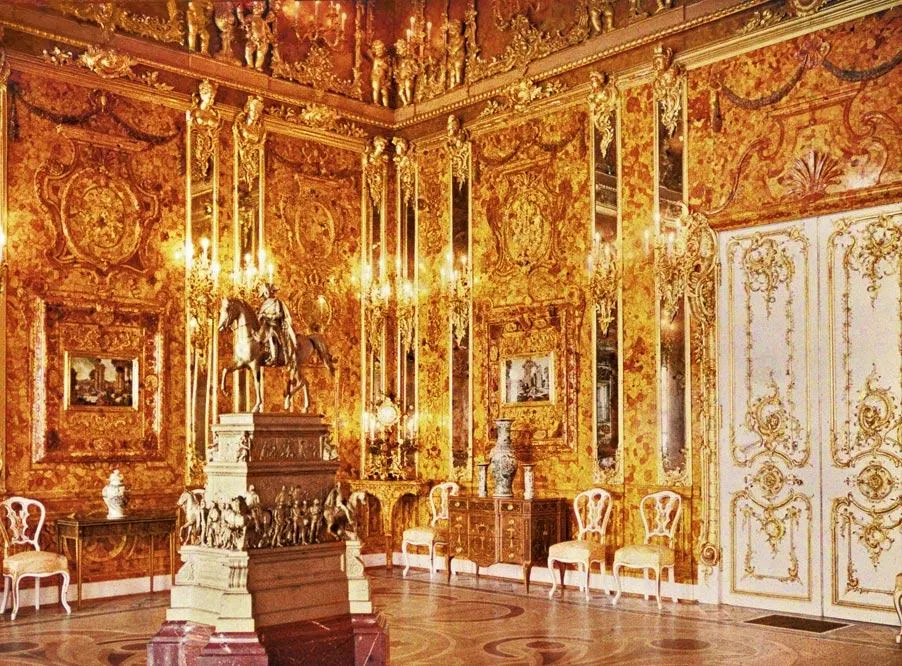
Imagine a room where sunlight dances on walls shimmering with warm, golden hues. This wasn’t a scene from a fairytale, but the very real wonder that was the Amber Room. The Amber Room, a dazzling chamber adorned with panels crafted from amber, captivated audiences for centuries. Its story begins not in Russia, where it eventually became a national treasure, but across the Baltic Sea in Prussia.
In the early 18th century, King Frederick I of Prussia desired a magnificent chamber for his Charlottenburg Palace. He commissioned German Baroque sculptor Andreas Schlüter and Danish amber craftsman Gottfried Wolfram to create a room unlike any other. For over a decade, skilled artisans meticulously transformed amber, a fossilized resin from ancient trees, into a breathtaking masterpiece. They carved panels, inlaid them with precious stones, and created elaborate mosaics, all bathed in the rich glow of amber. The finished product, completed in 1714, became known as the Amber Room.
However, the Amber Room wouldn’t remain in Prussia for long. Frederick William I, Frederick I’s son, wasn’t as captivated by the amber chamber. In 1716, he presented it as a diplomatic gift to Peter the Great, Tsar of Russia. Peter, a keen admirer of European craftsmanship, was enthralled by the Amber Room. He had it dismantled and transported to his new summer palace near St. Petersburg, which would later be named the Catherine Palace.
A Palace Adorned: The Amber Room Finds its Home in Catherine’s Palace
Peter the Great may have been captivated by Prussia’s Amber Room, but it was Catherine the Great, his daughter and successor, who truly transformed it into a jewel of the Russian Empire. Upon receiving the Amber Room in 1717, Peter had it installed in his Winter Palace in St. Petersburg. However, the room wasn’t quite the perfect fit.
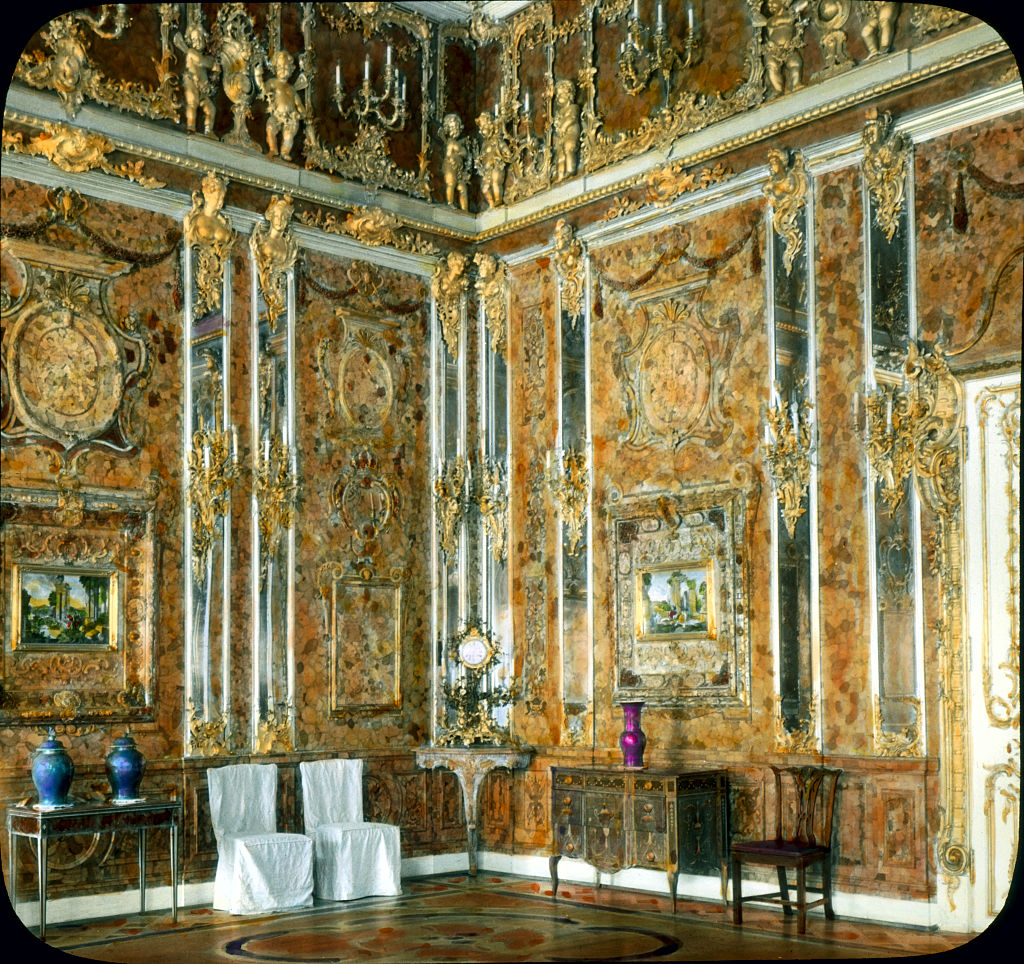
Catherine, enthralled by the amber chamber’s beauty and potential, envisioned a grander setting. In 1755, she ordered the Amber Room to be dismantled and transported to her beloved Tsarskoye Selo, a summer residence soon to be renamed the Catherine Palace. Here, the room would truly find its home.
Italian architect Bartolomeo Francesco Rastrelli was tasked with adapting the Amber Room to its new, larger space. He cleverly incorporated additional amber panels shipped from Prussia, expanding the chamber’s size and grandeur. Skilled Russian craftsmen meticulously restored and embellished the existing panels, adding their own flourishes to the design. The result was a masterpiece even more dazzling than the original.
Catherine wasn’t content with simply enlarging the Amber Room. She commissioned the creation of additional amber furniture and decorative pieces to complement the chamber. Mirrors were strategically placed to further enhance the warm glow of the amber, creating a truly breathtaking space. The completed Amber Room became a symbol of imperial opulence and artistic achievement, a testament to Catherine’s refined taste and appreciation for the arts.
Throughout the 18th century, the Amber Room continued to be embellished and altered by subsequent Tsars. However, its core essence – the captivating beauty of the amber panels and the masterful craftsmanship – remained a constant source of wonder for all who witnessed it. Little did anyone know, a dark chapter awaited this magnificent chamber, a chapter that would shroud it in mystery for decades to come.
War’s Shadow Falls: The Amber Room’s Disappearance in World World II
For centuries, the Amber Room shimmered as a beacon of artistic beauty within the opulent Catherine Palace. However, the tranquility of its existence was shattered with the outbreak of World War II. As Nazi forces swept across Europe, their sights fell upon the treasures of the Soviet Union, and the Amber Room became a target of their insatiable greed.
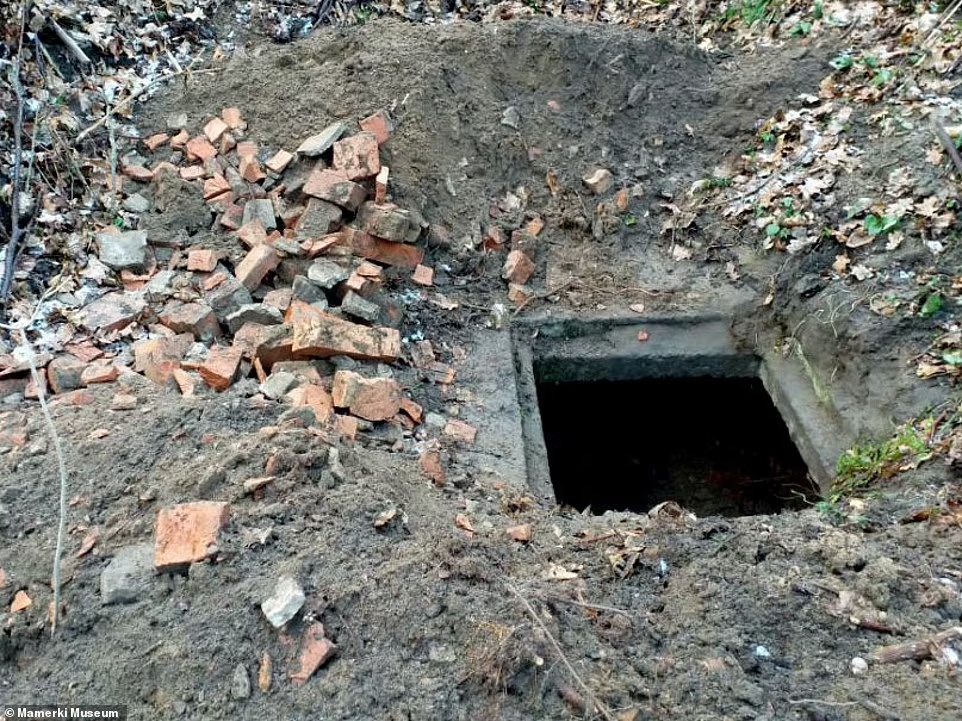
In 1941, with the German Army closing in on Leningrad (present-day St. Petersburg), museum curators at the Catherine Palace frantically attempted to save their precious collections. The Amber Room, with its fragile amber panels, posed a unique challenge. Disassembling and evacuating the room in its entirety proved impossible. The amber, brittle with age, would likely crumble during transport. In a desperate attempt to preserve this national treasure, curators cleverly disguised the Amber Room behind a facade of wallpaper, hoping to deceive the invading forces.
Unfortunately, their efforts were in vain. German troops, well-aware of the artistic riches housed in the Catherine Palace, meticulously searched the building upon their arrival in 1941. The disguised Amber Room did not fool their trained eyes for long. With ruthless efficiency, a team of German art experts spent just 36 hours dismantling the chamber, meticulously crating the amber panels, and shipping them off to Germany.
The loss of the Amber Room was a devastating blow for the Soviet Union. This unique masterpiece, a symbol of imperial grandeur and artistic heritage, had vanished. The Nazis intended to display the Amber Room in a museum planned for Hitler’s hometown of Linz, Austria. However, with the tide of the war turning against them, the chamber’s fate became uncertain. The trail of the Amber Room would go cold, leaving behind a profound mystery that continues to this day.
A Mystery Unfolding: The Search for the Lost Treasure
In the wake of World War II, the Soviet Union launched a desperate search for their stolen treasure – the Amber Room. The trail, however, remained frustratingly cold. The Nazis had kept meticulous records of looted art, but those pertaining to the Amber Room seemed to have vanished. Theories swirled – had the chamber been destroyed in Allied bombings? Hidden deep within a secret Nazi cache? Lost at sea during transport?
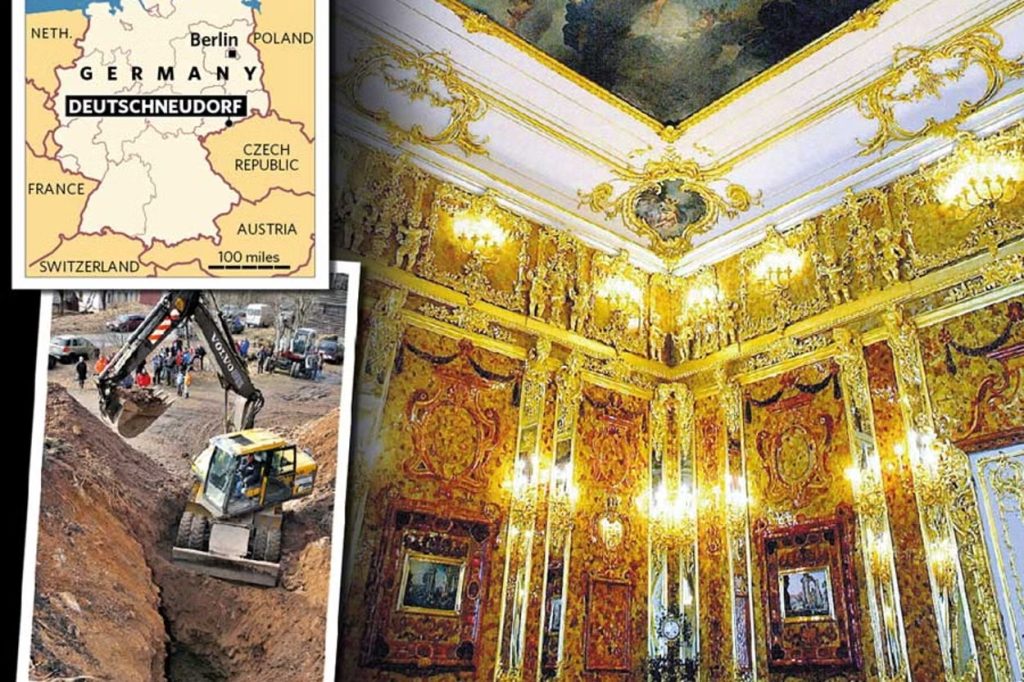
The Soviets dedicated significant resources to the search, interviewing witnesses, scouring captured documents, and following leads across war-torn Europe. Rumors and false sightings fueled the investigation, leading to dead ends and dashed hopes. The quest became a national obsession, a symbol of recovering not just a lost artwork, but a piece of national pride.
Throughout the Cold War, the search for the Amber Room continued. The fall of the Berlin Wall in 1989 offered a glimmer of hope. Newly opened Eastern Bloc archives revealed fragments of information, tantalizing clues that reignited the investigation. German researchers delved into these archives, piecing together the Amber Room’s last known movements within Nazi Germany.
The trail led to Königsberg, a German city heavily damaged by Allied bombing raids (now Kaliningrad, Russia). Theories emerged that the Amber Room had been stored there before being lost in the chaos of the war’s final days. Extensive excavations were conducted in Königsberg, unearthing remnants of Nazi buildings but yielding no sign of the missing chamber.
Despite decades of relentless investigation, the Amber Room remains a captivating enigma. While some experts believe it was destroyed during the war, others hold onto the hope that it might still be hidden somewhere, waiting to be rediscovered. The search continues, fueled by new technologies and a persistent hope that this lost treasure, the Amber Room, will one day return to its rightful place.
Enduring Enigma: Will the Amber Room’s Secrets Ever Be Revealed?
The mystery of the Amber Room continues to enthrall historians, art detectives, and treasure hunters alike. Despite decades of searching, the fate of this magnificent chamber remains shrouded in uncertainty. Was it destroyed in the bombings of World War II, or does it lie hidden somewhere, waiting to be rediscovered?
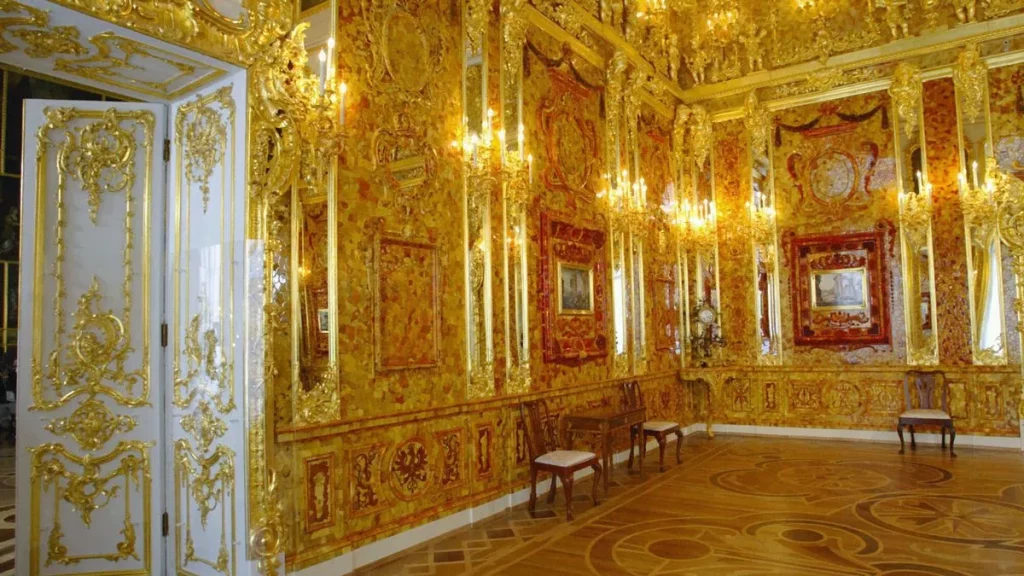
One of the biggest challenges in solving the Amber Room mystery is the lack of concrete evidence. The Nazis meticulously documented their looting activities, but crucial records pertaining to the chamber seem to have vanished. This lack of information has fueled numerous theories, some more plausible than others. Have you ever wondered how these unusual geological formations came to be? Take a deep dive into the scientific explanations for the creation of the Chocolate Hills in our article.
Some believe the Amber Room was indeed destroyed in Allied bombings that ravaged Königsberg in 1944. However, no concrete evidence supports this theory. Others posit that the chamber was stashed away in a secret Nazi cache, perhaps a hidden bunker or mine. Extensive searches have yet to uncover such a cache, leaving this theory open to debate.
A particularly intriguing theory suggests the Amber Room might have been sunk aboard the Wilhelm Gustloff, a German ship torpedoed by a Soviet submarine in 1945. While some eyewitness accounts support this theory, it remains unconfirmed. Underwater explorations undertaken in the Baltic Sea have so far yielded no conclusive results.
The enduring mystery surrounding the Amber Room has fueled a sense of hope that it might still be out there, waiting to be rediscovered. Advancements in technology, like ground-penetrating radar and deep-sea exploration techniques, offer new avenues for the search. Perhaps a long-lost document or a chance discovery will finally shed light on the chamber’s fate.
In the meantime, the story of the Amber Room serves as a powerful reminder of the devastating impact of war on cultural heritage. It’s a story of loss, intrigue, and the enduring human desire to reclaim the past. As the search continues, one thing remains certain: the Amber Room’s legacy as a captivating enigma and a lost masterpiece will continue to inspire exploration and wonder for generations to come.
Frequently Asked Questions (FAQs)
1. What is the Amber Room?
The Amber Room was a chamber entirely covered in amber panels, a dazzling masterpiece located in the Catherine Palace near Saint Petersburg, Russia. It was dismantled and stolen during World War II and its whereabouts remain unknown.
2. When was the Amber Room built?
The Amber Room was constructed between 1701 and 1714 in Prussia by German and Danish craftsmen. It was later gifted to Russia and installed in the Catherine Palace.
3. What happened to the Amber Room during World War II?
The Amber Room was dismantled and stolen by Nazi forces during their occupation of Russia in World War II. The Nazis intended to display it in a museum in Hitler’s hometown, but its fate after that remains a mystery.
4. Has the Amber Room ever been found?
The Amber Room has not been found despite decades of searching. There are many theories about its whereabouts, but none have been confirmed.
5. Is there still hope of finding the Amber Room?
Hope persists that the Amber Room may still be out there, hidden somewhere and waiting to be rediscovered. Advancements in technology offer new possibilities for the search.


